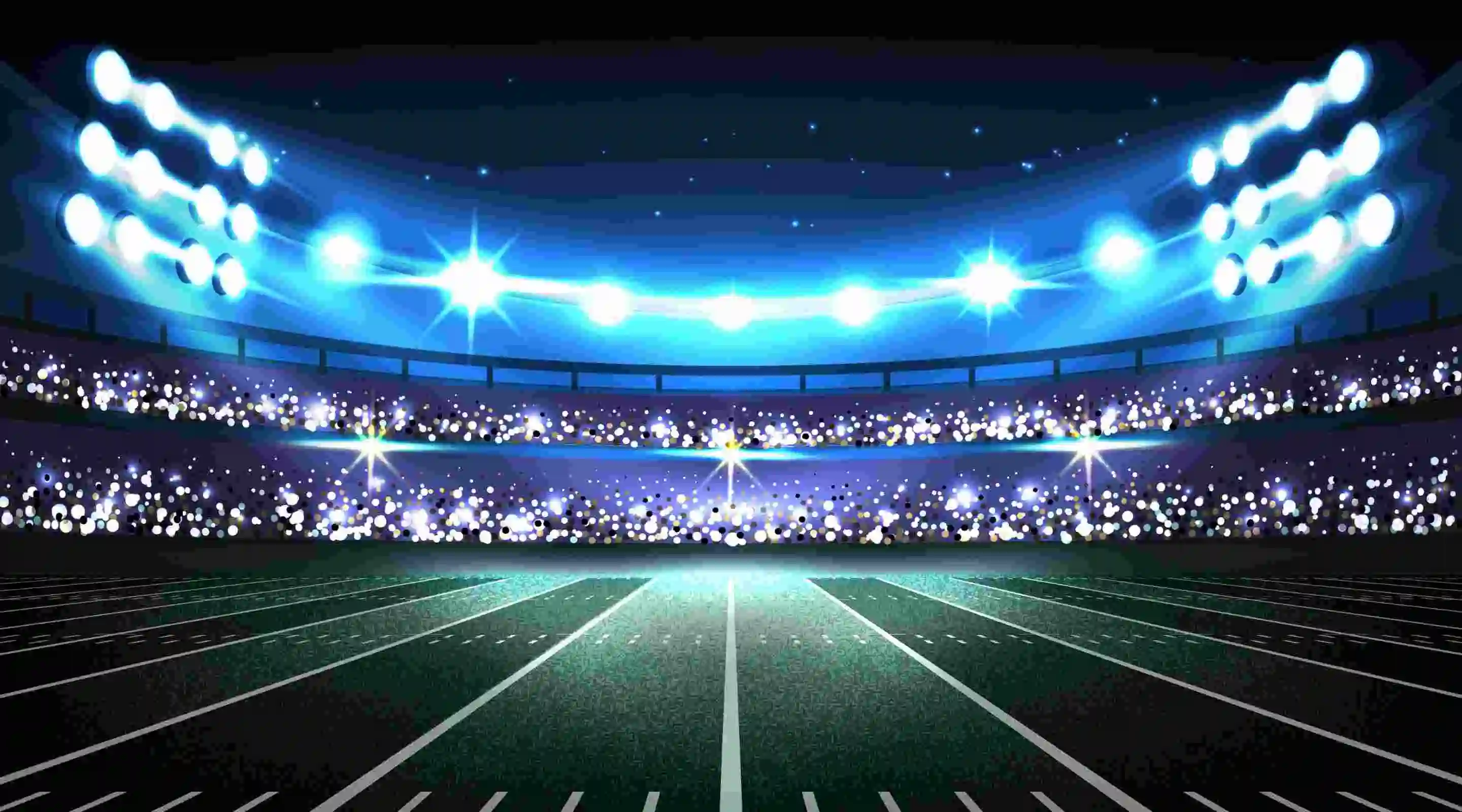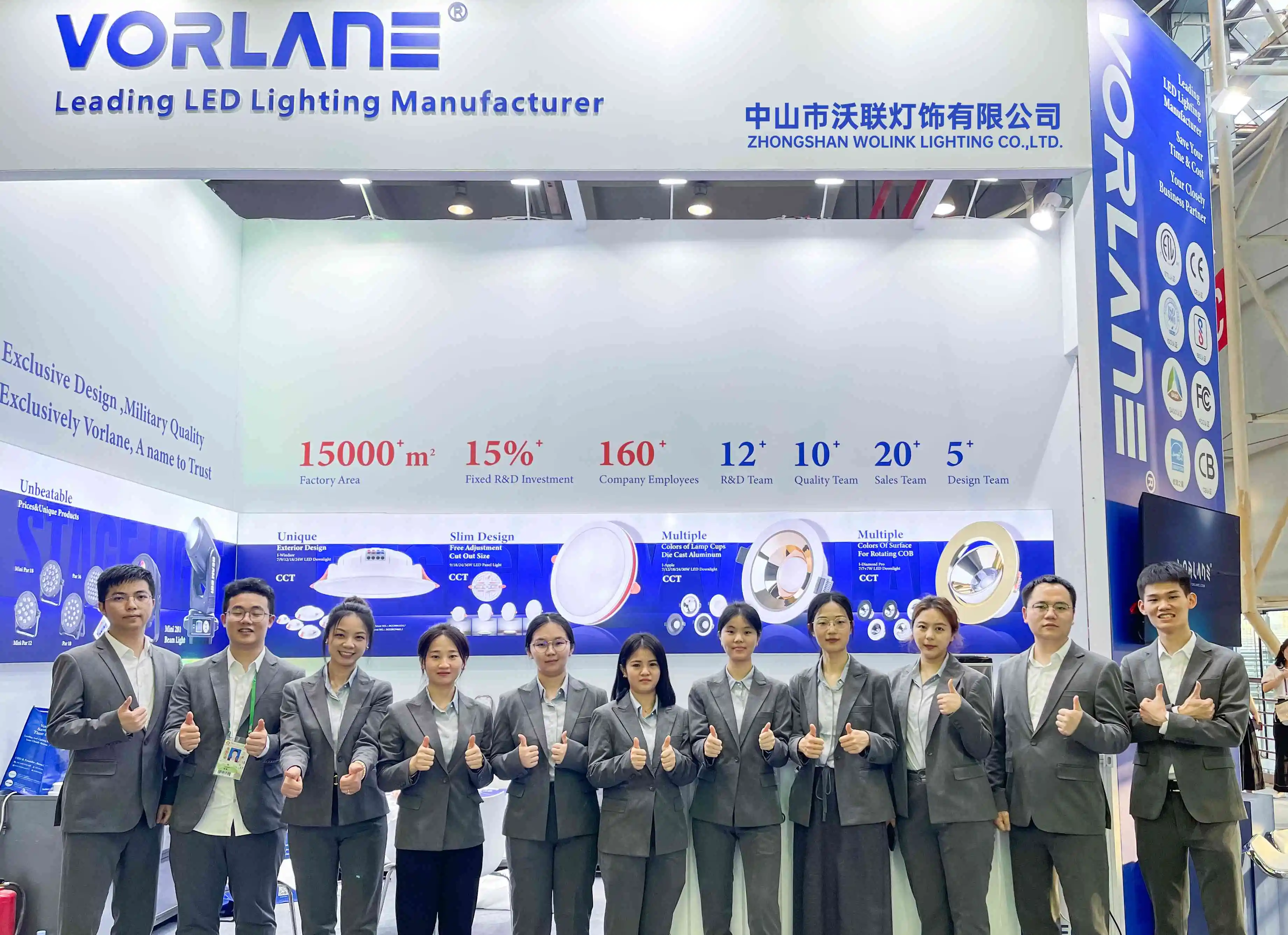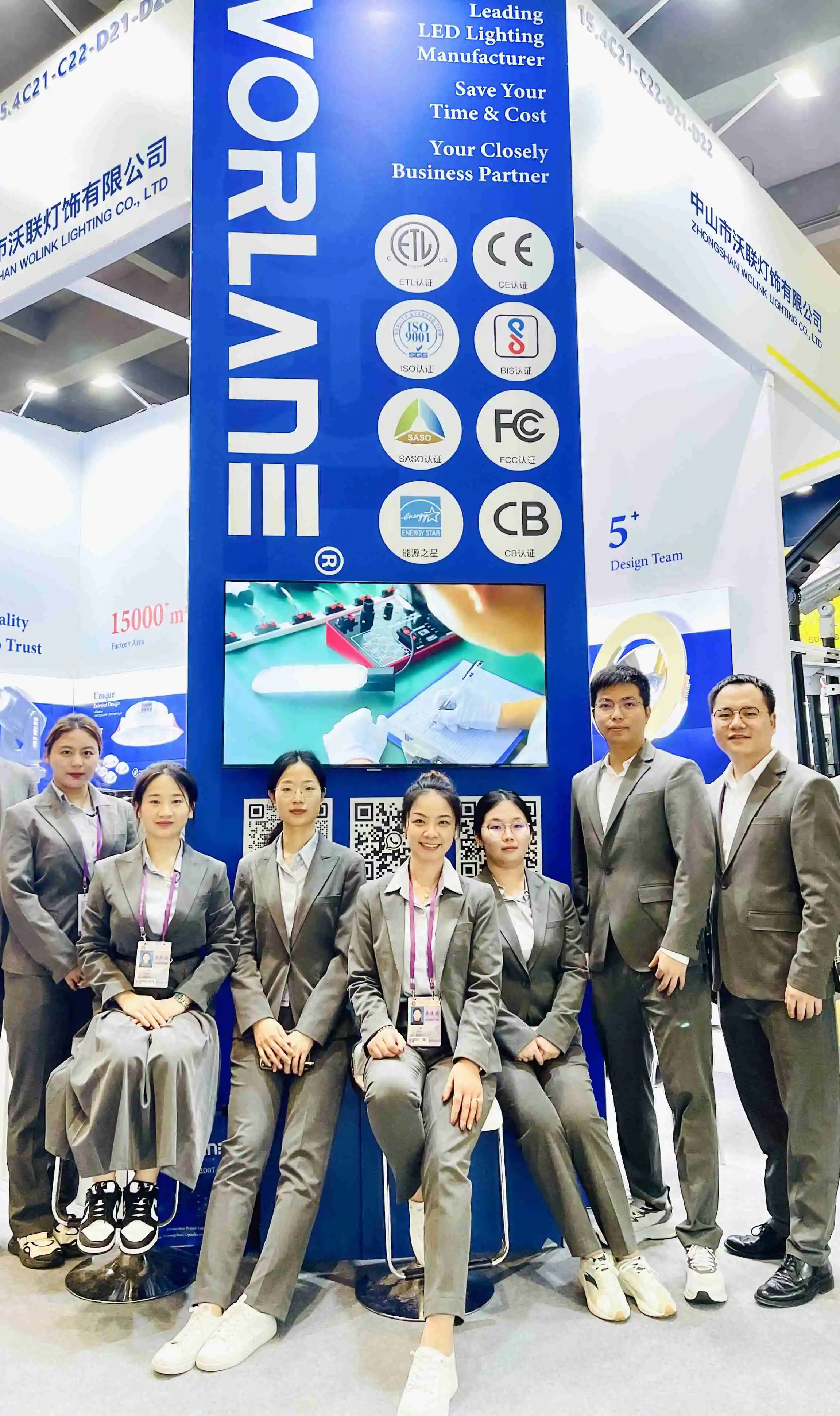
Top 15 Office Lighting Manufacturers In The World
Discover top global office lighting manufacturers enhancing work environments with innovative, energy-efficient solutions for productivity and comfort.
Hey there, tech enthusiast! Ever stared at your TV, computer, or smartphone screen and wondered what magic lies behind those vibrant displays? Well, today’s your lucky day. We’re diving deep into the world of display technologies, specifically focusing on two heavyweights: LED and LCD.
Now, you might ask, “Why does it even matter?” The answer is simple. Knowing the difference between LED and LCD can impact your choice when purchasing a new gadget. It’s a bit like choosing between two flavors of ice cream. Both are delicious, but each has its unique taste and texture. Similarly, LED and LCD have distinct features, and understanding them can enhance your viewing experience.
So, grab your favorite snack, sit back, and let’s embark on this enlightening journey!
| Criteria | นำ | LCD |
|---|---|---|
| Basic Technology | Uses diodes that emit light when current flows through them. | Uses liquid crystals to control light passage. Relies on external light sources like LEDs for illumination. |
| Origins and Evolution | Evolved as a light source, finding its way into screens later on. | Predates LEDs in display tech. Initial uses were basic, like in calculators and digital watches. |
| Physical Structure | Made of layers and components like OLEDs or Quantum Dots. Can be flexible and thin. | Uses liquid crystal layer sandwiched between polarized panels. Generally thicker and more rigid. |
| Image Quality | Offers superior brightness, contrast, and color vibrancy. | Can struggle with true blacks due to backlighting. Varies in color gamut based on backlight type. |
| ประสิทธิภาพการใช้พลังงาน | Typically more energy-efficient, leading to longer lifespans and reduced degradation. | Older LCDs (with CCFL backlighting) consume more power. Lifespan might be shorter than LEDs. |
| การใช้งาน | Used in a wide range of modern tech from TVs to smartphones. More versatile. | Common in specific displays, especially when LED is used as backlight. Still prevalent in many areas. |
| Cost Implications | Might have higher initial costs, but can offer better long-term value due to longevity. | Generally cheaper initially. Depending on use, might need more frequent replacements. |
| ผลกระทบต่อสิ่งแวดล้อม | Often seen as more eco-friendly due to fewer toxic elements and reduced energy needs. | Both have unique environmental challenges, especially older LCDs with CCFL backlights. |
ไฟ LED, or Light Emitting Diodes, might sound super technical, but let’s break it down in a way that’s easy to grasp. At its core, an LED is a two-lead semiconductor light source. When a suitable voltage is applied to the leads, electrons recombine with electron holes within the device, releasing energy in the form of photons. This process is called การเรืองแสงด้วยไฟฟ้า, and the color of the light is determined by the energy band gap of the semiconductor.
Think of it like a mini-light show. When electricity flows through, these tiny diodes light up, and voilà! We have our display. This ability of LEDs to produce direct light makes them incredibly energy-efficient and allows for thin, vibrant, and versatile displays.
Now, moving on to the world of LCDs or Liquid Crystal Displays. Instead of using individual light sources like LEDs, LCDs employ a different trick. They use a liquid crystal solution sandwiched between two layers of polarizing material. When electric current passes through this solution, the liquid crystals align in a specific way, allowing light to pass through in varying amounts.
But here’s the twist: LCDs don’t produce light by themselves. They rely on a backlight source to illuminate the screen. This is where LEDs often come into play in modern LCD screens, acting as that backlight. The combination of the liquid crystals and the backlight creates the images and videos you see.
It’s a tad bit like adjusting blinds on a window. Depending on the angle of the blinds (or in this case, the liquid crystals), different amounts of sunlight (or backlight) shine through, allowing us to see images on the screen. This technology makes LCDs great for offering clear and crisp displays, especially for static images or text.
Diving deeper into the annals of technology, let’s trace back to the roots of LED and LCD. The journey of these technologies is nothing short of fascinating.
Before becoming the cornerstone of modern displays, LEDs had humble beginnings. Invented in 1962 by นิค โฮโลนยัค จูเนียร์, LEDs were initially used as indicator lights for devices. Think of those tiny red lights on old radios or TV sets. Over the years, as technology advanced and manufacturing costs dropped, LEDs began to find their place in various applications—from simple indicators to traffic lights, and eventually, in the screens we use daily. This evolution has been driven by their energy efficiency, longevity, and ability to produce vibrant colors.
LCDs, on the other hand, have a different origin tale. They came into existence in 1968, developed by George H. Heilmeier at RCA Laboratories. Originally, their primary use was in digital watches and pocket calculators due to their low energy consumption. However as the demand for flatter, lightweight, and portable screens grew, researchers began to see the potential of LCDs in broader applications. By the 1980s and 1990s, they started appearing in computer monitors and TVs, giving rise to the era of thin, sleek displays that we know today. The continual refinement of LCD technology, combined with innovations like integrating LED backlights, has cemented its position in the tech world.
Understanding the nuances of technology often requires delving into its structure. Let’s break down the layers and components of both LED and LCD to understand their unique attributes.
LED displays are more than just clusters of tiny diodes. They have a specific layer structure that allows them to emit light efficiently:
What makes LEDs stand out is their slimness and adaptability. This allows them to be used in a variety of applications, from curved TVs to flexible display panels. Their inherent flexibility and thin structure make them suitable for innovative designs, such as rollable screens.
LCDs, though similar in some respects, are quite distinct in their build:
Compared to LEDs, LCDs are generally thicker due to the multiple layers involved in their construction. This also means they’re more rigid and don’t offer the same flexibility as LED displays. However, advances in technology are steadily reducing the thickness of LCDs, making them more competitive in the market.
Image quality can make or break the viewer’s experience, be it while watching a movie or browsing a website. The distinction in performance between LED and LCD often revolves around aspects like brightness, color accuracy, and backlighting. Let’s delve into these parameters to better understand each display type.
LEDs are renowned for their capacity to deliver a dynamic viewing experience. Here’s how:
Brightness and Contrast Ratio: LEDs inherently emit light, allowing them to achieve brighter displays. Combined with their ability to turn individual pixels on or off, they can produce deep blacks, resulting in an impressive contrast ratio.
Color Accuracy and Representation: LEDs, especially OLEDs (Organic Light Emitting Diodes), are celebrated for their vibrant color representation. The individual light emission of each diode means each pixel can display its color, leading to more accurate color representation and a wider color spectrum.
LCDs have their unique characteristics that influence image quality:
Backlighting and its Effect on Image: LCDs rely on a separate light source, typically LEDs or CCFLs (Cold Cathode Fluorescent Lamps), for illumination. The uniform backlight can sometimes make it challenging to achieve deep blacks, especially when compared to OLEDs. This can lead to a lower contrast ratio in some LCDs.
Color Gamut and Viewing Angles: The liquid crystals in LCDs control the amount of light passing through each pixel. Depending on the quality of the display and the technology (like IPS, In-Plane Switching), LCDs can offer a broad color gamut. However, some LCDs might suffer from color shifts when viewed from extreme angles, though advancements like IPS panels have significantly improved viewing angles and color accuracy.
In conclusion, while LEDs often have an edge in terms of brightness and contrast, high-quality LCDs with advanced technologies can come close, offering a commendable viewing experience.
In today’s eco-conscious world, energy consumption isn’t just about the electricity bill; it’s also about our carbon footprint. Both LED and LCD have distinct energy requirements and lifespans, impacting their efficiency and sustainability. Let’s dive into the nuances of these popular display technologies.
LEDs, being direct light sources, have some inherent advantages in terms of energy usage:
Power Requirements: LEDs are known for their energy efficiency. They require less power to emit the same amount of light as other sources, making them more eco-friendly and cost-effective in the long run.
Lifespan and Degradation Over Time: The typical lifespan of an LED display can extend to several years, depending on usage and quality. Over time, LEDs might experience a slight decline in brightness, but this degradation is gradual. With regular use, an LED can last longer than its LCD counterpart.
LCDs, relying on backlighting for illumination, have their energy dynamics:
Energy Use in Comparison to LED: LCDs, especially those with CCFL backlighting, generally consume more power than LED displays. However, it’s essential to note that many modern LCDs use LED backlighting, bridging the gap in energy efficiency between the two. These are often termed as LED-LCDs.
Longevity Factors: LCDs are durable, but their lifespan can be influenced by the backlight’s quality and the wear and tear of the liquid crystals. Over time, an LCD might experience issues like dead pixels or backlight bleed. However, advancements in technology and manufacturing processes have improved the longevity and reliability of LCD displays.
In a nutshell, while LEDs generally lead in terms of energy efficiency and lifespan, advancements in LCD technology, especially the adoption of LED backlighting, have made the gap narrower than ever. Choosing between the two often boils down to specific requirements and budget considerations.
From smartphones to jumbo advertising screens, both LED and LCD displays have found their unique niches in the technological landscape. Their specific characteristics and capabilities make each of them suitable for certain applications over the other.
Light Emitting Diodes have become increasingly popular in various sectors due to their adaptability and efficiency.
Popular Uses in Modern Tech and Industries:
Advantages in Specific Settings:
Liquid Crystal Displays, with their reliable image quality and cost-effectiveness, still hold substantial market share in many tech segments.
Common Applications Today:
Where it Shines Over LED:
In essence, while LEDs are heralded for their brightness, durability, and energy efficiency, LCDs continue to remain relevant because of their versatility, cost-effectiveness, and uniform display qualities. Each has its strengths, and the choice between the two often depends on the specific demands of the application.
When it comes to choosing between LED and LCD displays, the devil is in the details—especially those that affect our eyes and comfort. Let’s dive into how these เทคโนโลยี stack up from a user experience standpoint.
Choosing between LED and LCD boils down to what matters most to you: eye comfort, color fidelity, or how well your screen handles the fast-paced action. Both have their merits, but LEDs often edge out in providing a superior viewing experience.
When it comes to selecting a display technology, cost often plays a pivotal role in the decision-making process. Both LED and LCD technologies come with their own set of financial implications. Let’s dive into the cost factors associated with each.
Light Emitting Diodes, often celebrated for their energy efficiency and brilliance, also have certain cost considerations.
Initial Cost:
Maintenance and Long-term Expenditures:
Liquid Crystal Displays have been a staple in the display market for years and bring their own set of cost dynamics.
Pricing in the Market:
Long-term Value for Money:
To conclude, while LEDs might present a higher upfront cost, their long-term savings potential, particularly in terms of energy and maintenance, can make them a worthy investment. On the other hand, LCDs continue to be a reliable and cost-effective option for those looking for quality displays without breaking the bank. The choice between the two should factor in both initial costs and anticipated long-term expenditures.
As we grow more conscious of our environmental responsibilities, understanding the ecological footprint of the products we use becomes vital. Display technologies, namely LED and LCD, also come with their environmental considerations. Let’s delve into the green aspects of both.
Light Emitting Diodes, while revered for their efficiency, also have some green credentials to boast about.
Eco-friendliness:
Waste and Recycling Concerns:
Liquid Crystal Displays, widely used across various industries, also carry certain ecological impacts.
Carbon Footprint:
Disposal and Recycling Issues:
In conclusion, while both LED and LCD displays have made strides in reducing their environmental footprint, they still pose unique challenges. As consumers, being aware of these issues and opting for eco-friendly disposal and recycling methods can play a pivotal role in minimizing their ecological impact.
The journey through the realms of LED and LCD technology has been enlightening, revealing the nuances and intricacies of each. From their foundational science to the broader implications of their use, both have carved out distinctive niches in the world of display technologies.
Core Differences:
Informed Choices: As you stand on the crossroads of decision-making, consider your specific requirements:
At the end of the day, technology evolves, and the lines between LED and LCD continue to blur. But with knowledge as your compass, you’re well-equipped to navigate the landscape of display technologies, making choices that resonate with both your needs and the world’s greater good. As you step forward, may your screens be ever bright, and your choices enlightened!

Discover top global office lighting manufacturers enhancing work environments with innovative, energy-efficient solutions for productivity and comfort.

Explore the essential certifications for LED lights that ensure safety, performance, and compliance in various global markets. Learn about UL,

Explore top sports lighting manufacturers enhancing athletic performance and spectator experience with advanced, durable LED ways for various sports venues.

Learn how to change a light fixture with Vorlane’s guide. Discover necessary tools, safety tips, and step-by-step instructions for secure

Explore Vorlane’s range of garden LED lights, including pathway, spotlights, string, solar-powered, flood, decorative, and underwater lights.

Explore the benefits and applications of floodlights in various industries, including sports, construction, and public spaces.
ลงทะเบียนเพื่อรับประกาศและข้อเสนอผลิตภัณฑ์ล่าสุด
*เราเคารพการรักษาความลับของคุณและข้อมูลทั้งหมดได้รับการคุ้มครอง


 | รายงานการวิจัยอุตสาหกรรม LED นี้มีมูลค่า 10,000 ดอลลาร์!ต้องการรับข้อมูลอุตสาหกรรมที่เชื่อถือได้เพื่อสนับสนุนการวางแผนธุรกิจ LED ของคุณหรือไม่? ในรายงานนี้ คุณจะ:
*ส่งอีเมลของคุณเพื่อดาวน์โหลดไฟล์นี้ ข้อมูลส่วนบุคคลของคุณจะไม่ถูกแชร์กับบุคคลหรือองค์กรบุคคลที่สาม |
วอทส์แอพหาเรา


*เราเคารพการรักษาความลับของคุณและข้อมูลทั้งหมดได้รับการคุ้มครอง
